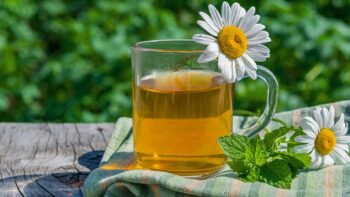[ad_1]
In ancient Greece, this herb was dedicated to the goddess Artemis and was used for its relaxing properties, while for hundreds of years it was a valuable ingredient in many elixirs of life as a plant of longevity and youth
*Written by Mr. Georgios Zakynthinos, Professor of Technology, Safety and Development of Functional Foods and Health Protection Products in Public Health, University of Western Attica
Its scientific name is bee or medicine, by the people it is also referred to as bee, bee herb and lemon balm, while according to Dioskourides it was beeswax. Is aromatic, medicinal plant and beekeeping. It got its name (honeygrass) from the fact that beekeepers use it when they want to attract bees.
Today, honeysuckle is cultivated for both its essential oil and its dry drug. According to its taxonomic description, honeysuckle belongs to the Lamiaceae family and to the species Melissa officinalis L. It is a perennial plant, with a quadrangular, multibranched stem, 40-80 cm high. It has large, oval, slightly serrated leaves with a sweet lemon scent. Its flowers are white or pinkish per 6-12 in axillary one-sided spines. There are several varieties, of which the most famous are the Russian Yevtika and Krumtsanka, whose essential oil contains about 80% citral.

Photo: Shutterstock
Honeysuckle thrives in both warm and cold areas, while the most suitable are semi-mountainous areas with mild winters, cool summers and meridian orientation.
Plantings of honeysuckle are carried out in two seasons, in autumn and spring. The best season, however, is autumn after the first rains. The planting of both the seedlings and the offshoots is done with planting machines.
Its leaves are considered to have tonic and antispasmodic properties. Their decoction is also considered to act against nervous diseases, of hypochondria, hysteria, vertigo, chronic catarrh and rheumatism. Its essential oil is mainly used in perfumery, in the preparation of soft drinks and finally as an ingredient in soft drinks. It is also used in pharmaceuticals as antimicrobialbecause it contains a large amount of citral, to which many microorganisms are susceptible.
Even today, honeysuckle concerns traditional medicine with its multiple properties, mainly in the treatment of disorders of the nervous system.

George Zakynthinos Professor of Technology, Safety and Development of Functional Foods and Health Protection Products in Public Health, University of Western Attica
